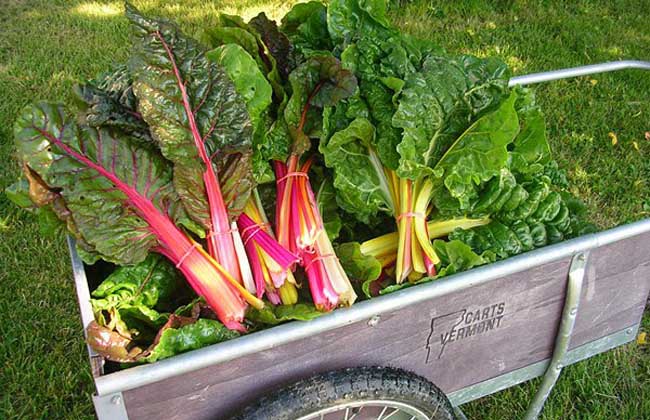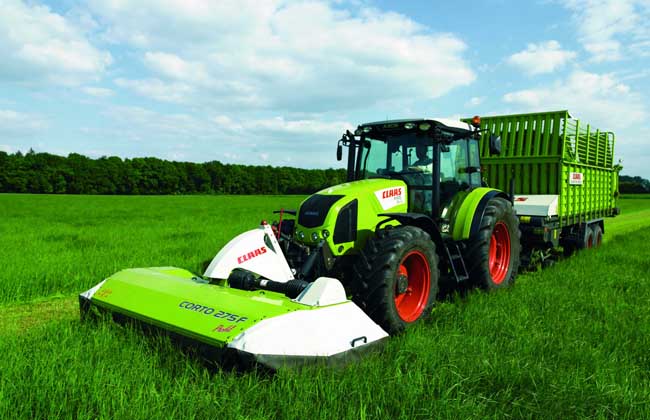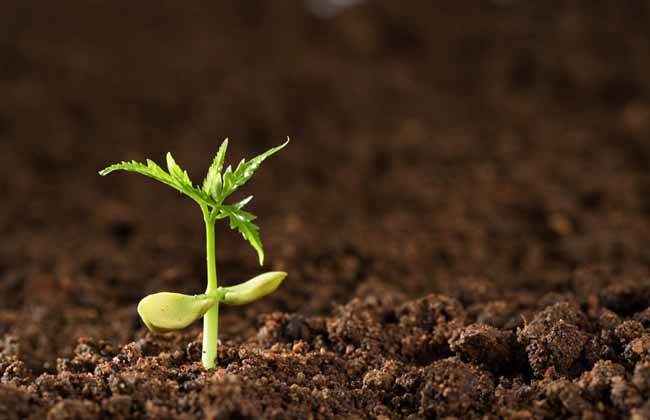National Standard of Organic Agriculture in China
Abstract: organic agriculture refers to the farming industry that uses organic fertilizer to meet the nutritional needs of crops or uses organic feed to meet the nutritional needs of livestock and poultry without artificial fertilizers, pesticides, growth regulators and livestock and poultry feed additives. The national standard of organic agriculture in China was officially issued by the State Administration of quality Supervision, Inspection and Quarantine and the State Standardization Management Committee on January 19, 2005.

Organic agriculture refers to the planting industry that uses organic fertilizer to meet the nutritional needs of crops or the breeding industry that uses organic feed to meet the nutritional needs of livestock and poultry without artificial synthetic fertilizers, pesticides, growth regulators and livestock and poultry feed additives. China's national standards for organic agriculture were formally issued by the State Administration of quality Supervision, Inspection and Quarantine and the State Standardization Administration on January 19, 2005. And officially implemented on April 1, 2005.
Contents of national standards for organic agriculture
1. Production standards: general norms and requirements for organic production of crops, edible fungi, wild plants, livestock and poultry, aquatic products, honeybees and their unprocessed products are stipulated, which are applicable to the whole process of organic production, it mainly includes crop cultivation, edible fungus cultivation, wild plant collection, livestock and poultry breeding, aquaculture, bee breeding and the transportation, storage and packaging of its products.
2. Processing standards: general norms and requirements for organic processing are stipulated, which are applicable to the whole process of processing, packaging, storage and transportation of raw products produced by GB/T19630.1, and include the content of organic textiles. The scope of application of this part is cotton or silk fiber products, excluding wool and other products.
3. Logo sales: general norms and requirements for the identification and sale of organic products are stipulated, which are applicable to the identification and sale of certified products produced or processed according to GB/T19630.1 or GB/T19630.2.
4. Management system: it stipulates the general norms and requirements of the management system that should be established and maintained in the process of production, processing and operation of organic products, which is applicable to the producers, processors, operators and related supply links of organic products.
Environmental standard for producing areas of organic agriculture
1. According to the organic product standard GB/T19630-2005, organic production needs to be carried out under suitable environmental conditions.
2. The organic production base should be far away from urban areas, industrial and mining areas, traffic trunk lines, industrial pollution sources, domestic garbage dumps, etc.
3. The environmental quality of the base should conform to the second grade standard of GB15618-1995, the quality of farmland irrigation water conforms to the regulation of GB5084, and the ambient air quality conforms to the second grade standard of GB3095-1996 and the regulation of GB9137.
Standard for the transformation period of organic agriculture
1. The starting time of the conversion period shall be counted from the date of submission of the certification application. The conversion period of annual crops is generally not less than 24 months, and that of perennial crops is generally not less than 36 months.
2. Farmland newly reclaimed, abandoned for a long time, cultivated in traditional agricultural methods for a long time, or where there is sufficient evidence that prohibited substances have not been used for many years should also go through a conversion period of at least 12 months.
3. During the conversion period, the management must be carried out in full accordance with the requirements of organic agriculture. Abstract: organic agriculture refers to the farming industry that uses organic fertilizer to meet the nutritional needs of crops or uses organic feed to meet the nutritional needs of livestock and poultry without artificial fertilizers, pesticides, growth regulators and livestock and poultry feed additives. The national standard of organic agriculture in China was officially issued by the State Administration of quality Supervision, Inspection and Quarantine and the State Standardization Management Committee on January 19, 2005.
Seed and Seedling selection of Organic Agriculture
1. Organic seeds or seedlings should be selected. When organic seeds or seedlings are not available on the market, conventional seeds or seedlings that have not been treated with prohibited substances can be selected, but plans should be made to obtain organic seeds and seedlings.
2. Crop species and varieties that adapt to local soil and climate characteristics and are resistant to diseases and insect pests should be selected. The genetic diversity of protected crops should be fully considered in the selection of varieties.
3. The use of seeds and seedlings treated with prohibited substances and methods is prohibited.
Control of diseases, insect pests and weeds in organic agriculture
The main results are as follows: 1. Select suitable resistant varieties, formulate appropriate plans for fertilizer and water management, crop rotation and diversified intercropping and intercropping, and improve the natural control ability of natural enemies by building hedges, nesting and promoting vegetation diversification.
2. Use mechanical control (such as traps, barriers, lighting and sound, etc.), biological control (such as release of natural enemies) and physical protection (such as anti-insect nets, solar soil disinfection) to control diseases and insect pests. Weeds are controlled by artificial weeding, mechanical weeding, thermal weeding, mulching and mowing and grazing animals.
3. The substances listed in Appendix B of GB/T19630-2005 are allowed only in case of emergency.
4. The use of synthetic fungicides, pesticides, herbicides and plant growth regulators is prohibited, and the use of genetically engineered products in any form is prohibited.
The conceptual meaning of organic products
1. the principle of organic agriculture is to produce in a closed cycle of agro-ecosystem energy, and the whole process uses agricultural resources. without using energy outside agriculture (chemical fertilizers, pesticides, production regulators and additives, etc.) to affect and change the energy cycle of agriculture, it is a production system of chemical fertilizers, pesticides, production regulators and feed additives with little or no artificial synthesis. The mode of production is a mode of production that makes use of the effective cycle of four production factors of animals, plants, microorganisms and soil in the ecosystem without breaking the biological cycle chain.
2. Organic products are produced and processed according to the standards of Organic Agriculture and the International Organic Food Association (IFOAM). Strict quality management system, production process control system and tracking system must be established in production and processing. Organic products must strictly follow the standards of production, collection, processing, packaging, storage and transportation. The use of chemically synthesized pesticides, fertilizers, hormones, antibiotics and food additives is prohibited, and the use of genetic engineering technology and its products and their derivatives is prohibited. The production base needs to have a conversion period, and pesticides and fertilizers must not be used for the first 2 to 3 years before the start of the production of organic products.
3. It has been demonstrated by the Organic products Certification Organization "IFOAM Accreditation Organization" (referred to as IAP) and issued to the certificate.
4. Organic food is a truly natural, pollution-free, high-grade, high-quality, safe and nutritious health food, including agricultural and sideline products and their primary processing and deep processing products. Such as grains, vegetables, fruits, beverages, milk, poultry and livestock products, aquatic products, seasonings, oils, fruits, honey, drugs, alcohol and so on. In addition to organic food, organic products include a variety of truly natural, pollution-free, high-grade, high-quality and safe non-human food products. such as machine textiles, leather, cosmetics, forest products, furniture and other means of livelihood and feed, bio-pesticides, fertilizers and other organic production materials.
Related
- A course of planting techniques and methods on how to grow carrots
- How to plant the latest tulips?
- Is it better to pick tea in the morning or in the afternoon? When is the best time for tea to be picked? what is the third or fifth tea?
- Launch Yuanxiao Happy combination Haocha + Tea Yuan healthy Taste
- Penghu Tourism "Fireworks 20 Parade with You"
- 2022 West Lake Happiness holds "Digital Revitalization Voucher" and draws iphone13 and laptop.
- Banqiao Fuzhou social houses are designed to change start-up combined with police elimination to create a safe and livable environment
- The convenient measure of "mechanical weeding" in Xinbei has been abused and the Agriculture Bureau has imposed heavy penalties on the illegal land consolidation.
- Changgeng University Joins Hands with Four Memory Factories to Rescue Memory Talent Shortage
- The list of Taiwan's top 100 MVP managers is listed by the Director-General of the Farmers' Association of Sanxia District.



